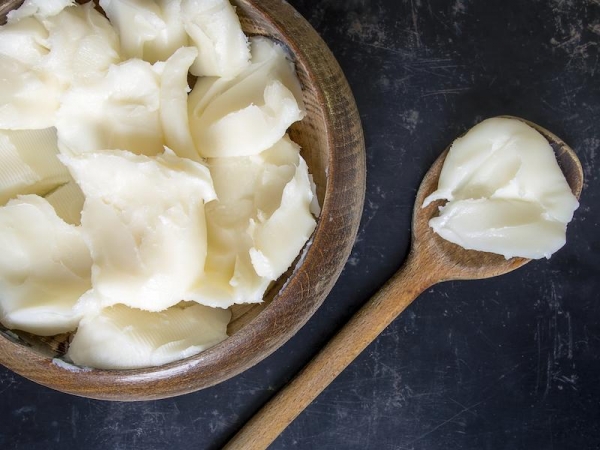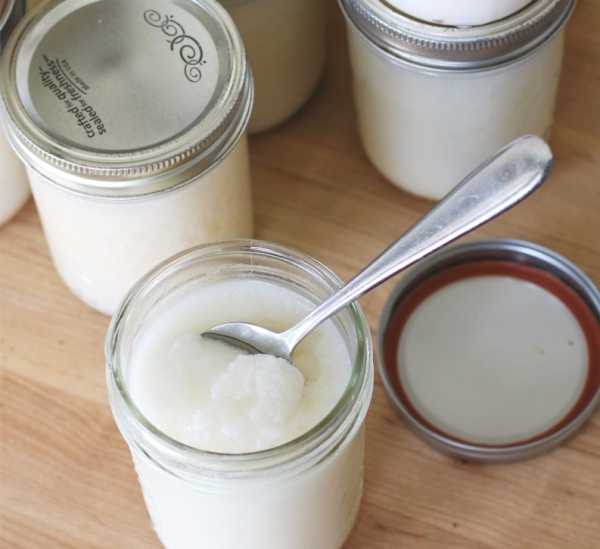Lard & Tallow

Rendering animal fats are very simple – in this recipe we will provide three ways to render lard and tallow/suet
►Lard from Pork FAT
►Tallow & Suet from Beef or Lamb FAT
Ask your butcher for a big bag of any of the above animal fats (preferably organic)
► Dripping from a Duck, or Goose
What is Lard and Tallow? Lard is pigs fat, whether it be in its raw state or rendered for cooking. Suet comes from beef or lamb and is described as the raw, hard fat from the cavity of the animal. This is collected from the internal layers and parts located near the organs are best. When the suet is rendered it becomes tallow and this is what you store in your fridge to cook with. Many traditional recipes have used suet in there cooking, however we aim to simply melt the fat into a liquid form.
What about dripping? Dripping has been used for centuries and is the fat collected from a duck, goose or chicken. The quality of the fat is dependent upon what the bird has eaten. Dripping collected from poultry produces a very tasty flavour to roasted vegetables.
Note: Rendering lard creates a strong smell. The lower the temperature to render the fat, the less intrusive the smell will be.
Here are the Essential and allowable GAPS FATS for cooking
Lard, Tallow and Dripping: These fats are fully saturated fats that do not alter their chemical structure when heated. These fats are very stable and good for frying.
Coconut Oil: Select Organic Cold Pressed Extra Virgin Coconut Oil. Coconut oil contains largely saturated fats and does not change its chemical structure when heated. It is important to buy good quality coconut oil to avoid those that have been hydrogenated. It is recommended you acquaint yourself with the benefits of coconut oil and use it generously in your baking. This fat is good for baking cakes and sweets rather than roasting meats and vegetables – best to leave that to the animal fats.
FATS for Salads and Meals
Olive Oil: Select Organic Cold Pressed Extra Virgin Olive Oil. Use daily, drizzled over your meals but do not cook with it as it will change its chemical structure and damage the important minor components. This oil is delicious over salad with a good squeeze of lemon. Getting into the habit in using these oils will supplement your diet well with essential fatty acids and reduce the work load on the liver.

| Prep Time | 15-20 Minutes |
| Cook Time | 2-4 Hours |
| Servings |
Mills
|
- 1 Kg Raw Pork Fat Alternatives: Tallow (beef or lamb fat) cut off any excess meats
- 1 Kg Raw Pork Fat Alternatives: Tallow (beef or lamb fat) cut off any excess meats
- 1/8 0 1/4 Cup Filtered Sater
- 1 kg Raw Pork Fat Alternatives: Tallow (beef or lamb fat) cut off any excess meats
Ingredients
Option 1: Dripping in the oven - You will need a large oven tray with a dripping rack
Option 2: Rendering in the oven - You will need a large oven tray
Option 3: Slow Cook Render - You will need a slow cooker
|

|
- Preheat the oven to 120 - 130 degrees Celsius.
- Trim off any meat still attached to the fat - we only want the fat. A little bit of meat left on the fat is harmless as it will drop out during the rendering process, however it will change the flavour.
- Place the fat pieces on your dripping rack and sit your dripping rack on or inside your oven pan.
- Render the fat for approximately 2-3 hours. The liquid fat will drip from the large piece of fat into the bottom pan.
- Remove from the heat and allow to cool a little before filtering through a stainless steel strainer. Discard the fat and pour the lard into heat tempered glass jars like the ball mason wide mouthed jars - see link for supplies below. Be careful not to pour into regular glass jars to avoid the risk of breakage.
- Preheat the oven to 120 degrees Celsius.
- Trim off any meat still attached to the fat - we only want the fat. A little bit of meat left on the fat is harmless as it will drop out during the rendering process, however it will change the flavour.
- Cut your lard or tallow into small pieces (approximately 1 inch cubes) and place into your oven dish.
- Pour the water into the oven dish, this will reduce the lard or tallow from burning on the edges and the water will evaporate during the process.
- Place the oven dish inside and cover with a lid.
- Render for approximately 2 – 2 ½ hours whilst attending to it by stirring occasionally with a steel spoon. The fat cubes will gradually release its fat in liquid form whilst becoming crisp and shriveled. If you notice that the water has not yet evaporated, you can increase the temperature to 165 degrees Celsius and keep it uncovered for ten minutes.
- Remove from the heat and allow to cool a little before filtering through a stainless steel strainer. Discard the fat and pour the lard into heat tempered glass jars like the ball mason wide mouthed jars - see link for supplies below. Be careful not to pour into regular glass jars to avoid the risk of breakage.
- Trim off any meat still attached to the fat - we only want the fat. A little bit of meat left on the fat is harmless as it will drop out during the rendering process, however it will change the flavour.
- Chop your fat into tiny small pieces. Alternatively you can mince the fat in a food processor or thermomix, however it is important to note that your fat will need to be frozen before you mince it or it will result in a slimy mess and clog the blades.
- Place the fat into your slow cooker. Turn it onto the lowest temperature and cook for 3 - 4 hours.
- Cooking times will vary depending on temperature, volume and size of the fat pieces but a general rule is to cook until you have small browned cracklings in a bath of clear fat.
- Remove from the heat and allow to cool a little before filtering through a stainless steel strainer. Discard the fat and pour the lard into heat tempered glass jars like the ball mason wide mouthed jars - see link for supplies below. Be careful not to pour into regular glass jars to avoid the risk of breakage.

Storage: Store in Ball mason wide mouthed freezer safe jars. These are heat tempered and will not crack when you pour the lard into them.


